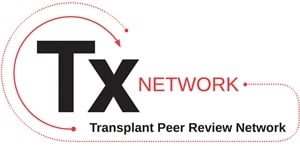Journal list menu
Export Citations
Download PDFs
Cover Image
American Journal of Transplantation: Volume 18, Number 2, February 2018
- First Published: 30 January 2018
On the cover this month: AJT presents the output from the 2017 Banff consortium for kidney allograft pathology (Haas et al, page 293), including revisions to the diagnostic criteria for T cell– and antibody-mediated kidney transplant rejection, specific criteria for chronic active T cell–mediated rejection, and prospects for integrative endpoints in clinical trials. Two Original Articles from Nankivell et al (page 364) and Lefaucheur et al (page 377) influence the new Banff recommendations regarding the relationship between T cell–mediated rejection and areas of interstitial scarring. We also present a new Banff classification for tissue engineering pathology in bioengineered organs and tissues for transplantation that will increasingly be used as prosthetic devices and tissue engineering become more common. Finally, be sure to read the “What's Hot, What’s New” feature from the 2017 American Transplant Congress! Cover image by Lauren Halligan, Duke University Department of Surgery.
The AJT Report
Puerto Rico after Hurricane Maria
- Pages: 283-284
- First Published: 30 January 2018
This month's installment of “The AJT Report” covers the recent hurricanes that devastated Puerto Rico and Houston, which necessitated prompt action and keen judgment by local hospitals on behalf of transplant patients, and shed a light on emergency response areas that require attention.
Literature Watch
DC Metabolism Controls Lung T Cell Polarization
- Page: 285
- First Published: 30 January 2018
Dendritic cells’ metabolism determines their adjustment to specific tissues and the type of adaptive immunity they instruct following inflammatory challenges.
EDITORIAL
Novel approaches to antifungal therapy
- Pages: 287-288
- First Published: 05 December 2017
Novel use of inhaled antifungal therapy is of interest to minimize systemic toxicity and drug–drug interactions while improving drug delivery directly to the site of infection. See the case report from Solé et al on page 504.
MINIREVIEW
Innate allorecognition by monocytic cells and its role in graft rejection
- Pages: 289-292
- First Published: 19 July 2017
This minireview introduces the novel concept of allorecognition by monocytes and macrophages, and summarizes the current understanding of its mechanisms and relevance to transplantation.
MEETING REPORTS
The Banff 2017 Kidney Meeting Report: Revised diagnostic criteria for chronic active T cell–mediated rejection, antibody-mediated rejection, and prospects for integrative endpoints for next-generation clinical trials
- Pages: 293-307
- First Published: 15 December 2017
The Banff consortium presents revisions to the diagnostic criteria for T cell– and antibody-mediated kidney transplant rejection, including specific criteria for chronic active T cell–mediated rejection, plus prospects for integrative endpoints in clinical trials. See related articles on pages 321, 364, and 377.
What's hot, what's new: Report from the American Transplant Congress 2017
- Pages: 308-320
- First Published: 19 December 2017
The authors highlight the most impactful presentations from the 2017 American Transplant Congress.
PERSONAL VIEWPOINT
The bridge between transplantation and regenerative medicine: Beginning a new Banff classification of tissue engineering pathology
- Pages: 321-327
- First Published: 01 December 2017
The new Banff classification of tissue engineering pathology will characterize the pathologic abnormalities in bioengineered organs and tissues for transplantation, and will increasingly be used with the existing Banff classification of allograft pathology as prosthetic devices and tissue engineering become more common. See related articles on pages 293, 364, and 377.
ORIGINAL ARTICLES
Basic Science
iNKT cell activation plus T-cell transfer establishes complete chimerism in a murine sublethal bone marrow transplant model
- Pages: 328-340
- First Published: 02 August 2017
Allogeneic T-cell transfer together with invariant natural killer T-cell activation facilitates bone marrow engraftment and establishes skin allograft tolerance in a murine mixed chimerism induction model using a minimum number of bone marrow cells.
CD4+CD28null T cells are not alloreactive unless stimulated by interleukin-15
- Pages: 341-350
- First Published: 31 August 2017
CD4+CD28null T cells can become alloreactive when the proper conditions are met, especially in the presence of IL-15, and IL-21 can enhance the cytotoxic potential of CD4+CD28null T cells.
Longitudinal assessment of T cell inhibitory receptors in liver transplant recipients and their association with posttransplant infections
- Pages: 351-363
- First Published: 25 October 2017
A cohort of liver transplant patients demonstrates that high expression of PD-1 and Tim-3 by memory T cells before transplantation is associated with increased incidence of infections after liver transplantation.
Clinical Science
The causes, significance and consequences of inflammatory fibrosis in kidney transplantation: The Banff i-IFTA lesion
- Pages: 364-376
- First Published: 01 December 2017
This longitudinal cohort study concludes that i-IFTA was the histological consequence of active T cell–mediated alloimmunity, representing the interface between inflammation and tubular injury, and followed by adverse structural and functional outcomes. See related articles on pages 293, 321, and 377.
T cell–mediated rejection is a major determinant of inflammation in scarred areas in kidney allografts
- Pages: 377-390
- First Published: 31 October 2017
This observational study, performed in a prospective cohort of 1,539 kidney transplant recipients, demonstrates that the occurrence of inflammation in scarred areas of the kidney allograft is mainly determined by T cell–mediated rejection and the intensity of the immunosuppressive regimen, and is associated with poor transplant outcomes. See related articles on pages 293, 321, and 364.
Kidney allograft offers: Predictors of turndown and the impact of late organ acceptance on allograft survival
- Pages: 391-401
- First Published: 31 July 2017
Using national registry data, this cohort study identifies several donor-, geography-, and timing-related factors that independently contribute to a greater number of turndowns during match-runs despite being unrelated to allograft quality.
Harms of unsuccessful donation after circulatory death: An exploratory study
- Pages: 402-409
- First Published: 14 August 2017
The authors use qualitative analysis of interviews with family members of potential donors and focus groups of professional stakeholders to characterize a spectrum of harms resultant from unsuccessful donation after circulatory death.
Laparoscopic sleeve gastrectomy improves renal transplant candidacy and posttransplant outcomes in morbidly obese patients
- Pages: 410-416
- First Published: 14 August 2017
Whereas morbid obesity portends poor outcomes after kidney transplantation, morbidly obese end-stage renal disease patients may undergo sleeve gastrectomy to improve transplant candidacy and achieve excellent posttransplant outcomes.
Exercise capacity in young adults after hematopoietic cell transplantation in childhood
- Pages: 417-423
- First Published: 08 August 2017
Exercise capacity is significantly decreased in a group of young adults treated with hematopoietic cell transplantation in childhood when compared with a group of matched healthy volunteers.
Dual-graft adult living donor liver transplantation with ABO-incompatible graft: short-term and long-term outcomes
- Pages: 424-433
- First Published: 31 July 2017
Dual-graft adult living donor liver transplantation with ABO-incompatible grafts demonstrates an acceptable outcome in patient and graft survival, and proves to be safe in regards to biliary complications associated with the ABO incompatibility, which suggests its feasibility to expand the living liver donor pool without increasing donor risks.
Pure laparoscopic living donor hepatectomy: Focus on 55 donors undergoing right hepatectomy
- Pages: 434-443
- First Published: 08 August 2017
Compared with the open approach, pure laparoscopic donor hepatectomy, primarily right hepatectomy, is a feasible procedure when performed by a highly experienced surgeon and transplantation team.
Heparin-binding protein, lysozyme, and inflammatory cytokines in bronchoalveolar lavage fluid as diagnostic tools for pulmonary infection in lung transplanted patients
- Pages: 444-452
- First Published: 08 August 2017
This prospective study on bronchoalveolar fluid from lung transplant recipients suggests that heparin-binding protein, IL-1beta, and IL-8 are useful biomarkers for the detection of pulmonary infection.
Incidence and outcomes of primary central nervous system lymphoma in solid organ transplant recipients
- Pages: 453-461
- First Published: 14 August 2017
In a large population-based cohort study of solid organ transplant recipients, risk of primary central nervous system lymphoma was substantially elevated, especially within the first 1.5 years after transplant and in recipients who were seronegative for Epstein–Barr virus infection, and the diagnosis was associated with higher mortality than other systemic non-Hodgkin lymphomas.
BRIEF COMMUNICATIONS
Taking the challenge: A protocolized approach to optimize Pneumocystis pneumonia prophylaxis in renal transplant recipients
- Pages: 462-466
- First Published: 12 September 2017
The authors describe the development and implementation of a protocol for trimethoprim-sulfamethoxazole adverse drug reaction assessment and rechallenge in renal transplant recipients, and report a safe increase in first-line Pneumocystis pneumonia prophylaxis and reduction in costs.
Prevalence and outcomes of cystic lesions of the transplant pancreas: The University of Wisconsin Experience
- Pages: 467-477
- First Published: 11 October 2017
In a high-volume pancreas transplant center, the authors examine the prevalence and outcomes of cystic lesions of the transplant pancreas with a proposed management algorithm.
Beneficial effect of recombinant rC1rC2 collagenases on human islet function: Efficacy of low-dose enzymes on pancreas digestion and yield
- Pages: 478-485
- First Published: 16 October 2017
This study evaluates the efficacy of low-dose recombinant collagenase enzyme mixture and identifies its beneficial effect on human islet yield and function.
Potential yield of imminent death kidney donation
- Pages: 486-491
- First Published: 04 October 2017
A medical record review suggests that imminent death organ donation could provide thousands more kidneys in the United States every year and substantially reduce the nation's kidney waiting list.
Outcomes of organ transplants when the donor is a prior recipient
- Pages: 492-503
- First Published: 09 October 2017
This study provides evidence for the judicious utilization of organs donated from prior transplant recipients as another form of expanded criteria donor.
CASE REPORTS
Salvage therapy with topical posaconazole in lung transplant recipients with invasive Scedosporium infection
- Pages: 504-509
- First Published: 08 November 2017
This report describes the successful use of topical posaconazole as salvage therapy for tracheobronchial and lung Scedosporium invasive infections in lung transplant recipients. See the editorial by Thompson III and Patterson on page 287.
Donor-derived Kaposi's sarcoma in a liver–kidney transplant recipient
- Pages: 510-513
- First Published: 23 September 2017
With increasing numbers of human immunodeficiency virus–positive individuals receiving organ transplants, and in some cases serving as organ donors, greater awareness of the risk factors for posttransplant Kaposi's sarcoma and measures to reduce its occurrence may be warranted.
Reports From the CDC: MMWR
CDC Grand Rounds: Improving medication adherence for chronic disease management — Innovations and opportunities
- Pages: 514-517
- First Published: 30 January 2018
This article reviews interventions to improve adherence to medications in individuals with chronic medical issues, such as those seen in transplantation.
IMAGES IN TRANSPLANTATION
CME
New-onset serositis in a kidney transplant patient
- Pages: 518-520
- First Published: 30 January 2018
LETTERS TO THE EDITOR
Predicted indirectly recognizable HLA epitopes (PIRCHE): Only the tip of the iceberg?
- Pages: 521-522
- First Published: 21 August 2017
Invited letter in response to “Predicted indirectly recognizable HLA epitopes (PIRCHE): Only the tip of the iceberg?”
- Pages: 523-524
- First Published: 09 October 2017
Recurrence of oxalate nephropathy after isolated kidney transplantation for primary hyperoxaluria type 2
- Pages: 525-526
- First Published: 25 October 2017
Invited response to recurrence of oxalate nephropathy after isolated kidney transplantation for primary hyperoxaluria type 2
- Page: 527
- First Published: 21 November 2017
A helpful approach to organ donation: From end-of-life care to effective organ transplantation
- Pages: 528-529
- First Published: 11 September 2017




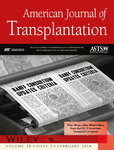
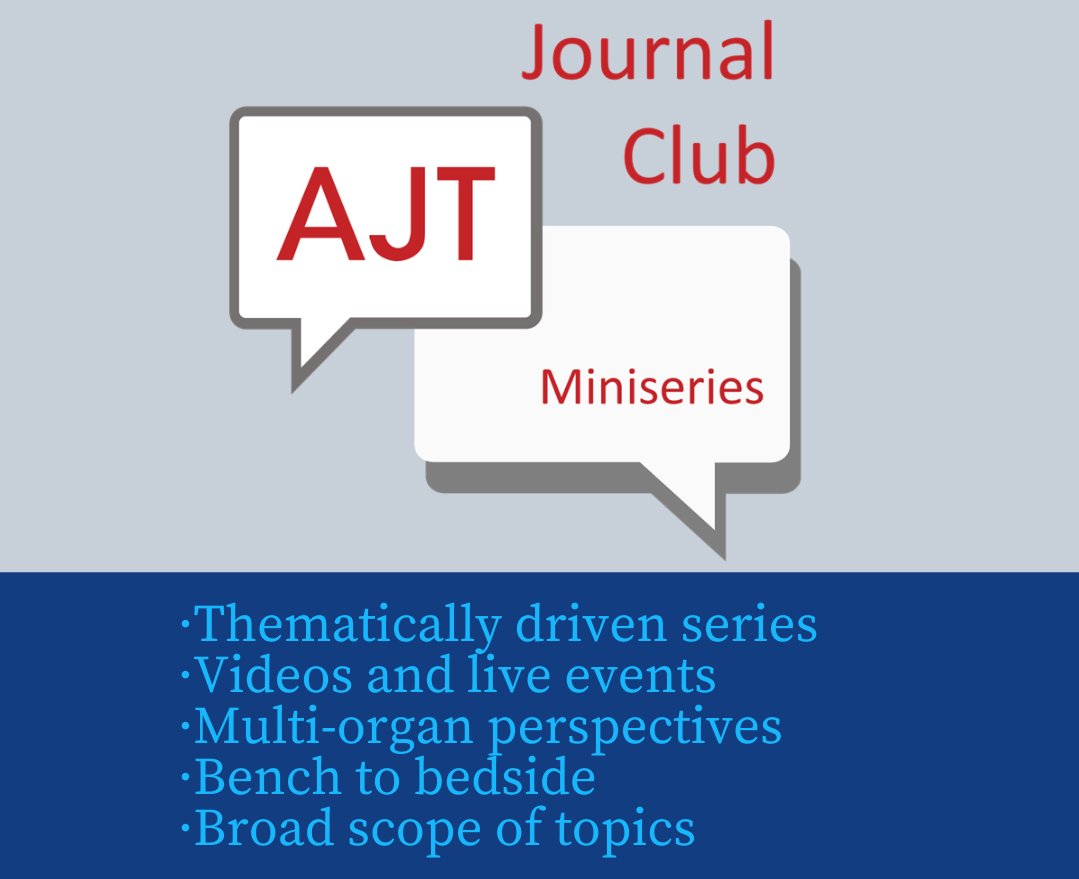


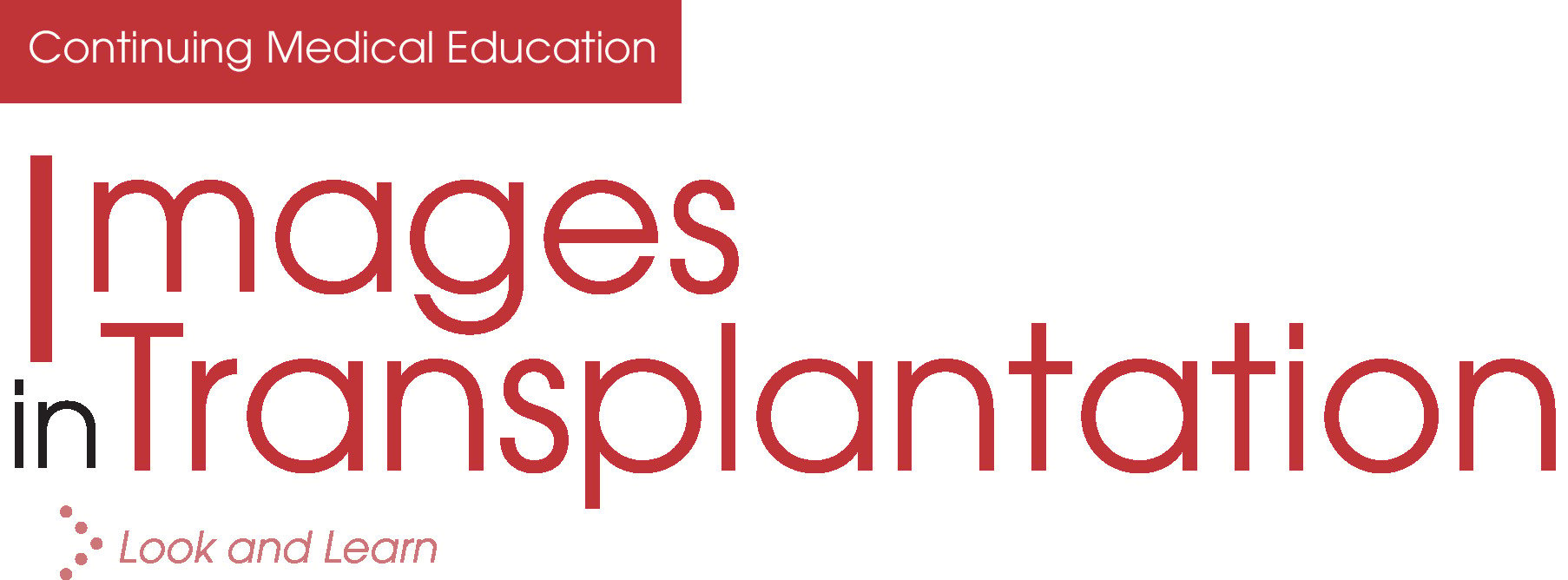
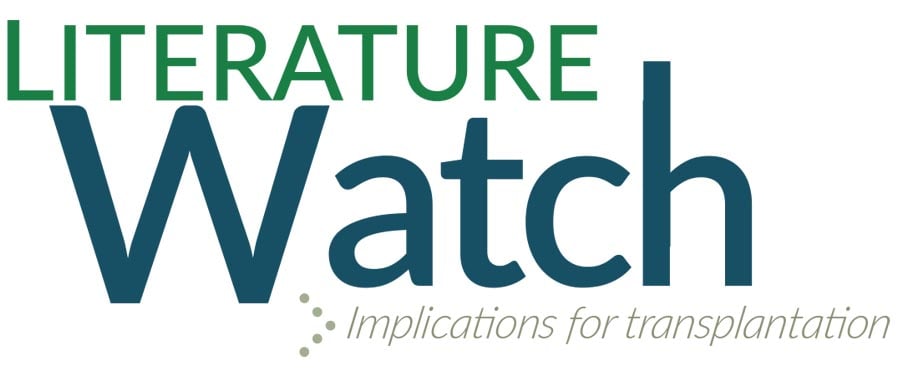
.jpg)
